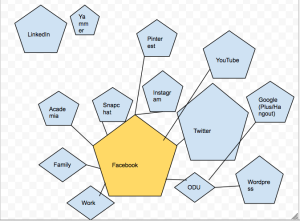I noted in my first topic proposal, “I will study a particular LARP that I will play between February 28 and March 2. … I am currently leaning toward the Jeep Form LARP, which is less structured and more dynamically co-created in the four-hour session via improv and lots of character autonomy and agency. … The game is neither playable nor solvable alone; thus a system or network is needed to experience the reality that is LARP.”
I have indeed selected the larp that stems from the Jeepform tradition, and is categorized by its writers as part of a burgeoning self-defined style called American Freeform [Larp]. The use of the term “larp” to describe it is under debate by the community (see Lizzie Stark’s post), but in the largest genre sense, it definitely is larp — live, embodied players taking on roles and enacting a particular scenario using rules/mechanics and techniques for the purpose of exploration and fun. (Truth be told, the use of the term “freeform” is also contentious, as is the word “American”, but such is larp.) But the American Freeform style takes table-top as a closer progenitor (much like most US larps, as opposed to their European, especially Nordic counterparts), and borrows from the table certain meta-techniques that carve the larp into clear scene breaks and acts, something considered sacrilege to those who espouse that “true larp” is immersive and continuous while in game. Read Evan Torner’s manifesto to learn even more.
The focus of this study will not be whether American Freeform (or Jeepform for that matter) is larp; rather, I will look at the specific meta-techniques outlined by a particular American Freeform game, Play with Intents – -Noir Version. (You can read the system here: Last Chance Noir). According to one of the authors, Emily Care Boss, “Freeform meta-techniques are procedures which interrupt into the flow of the narrative, but which give players access to additional layers of storytelling and embodiment of character.” In this sense, the techniques make for a constantly changing activity system that moves between and among the players and techniques, and among the layers of role-play in-game/out-of-game, in-character/out-of-character, social norms, tropes, motivations, etc. The game is set up for maximum flexibility and is dependent on the players adaptability to change to keep the narrative moving.
I want to take a look at these meta-techniques as creating the protocols and boundaries for the larp to unfold. Each of the techniques functions as a node in the network, and can be called upon at any time during a scene by a player or the GM. I think this particular larp style will work will for Actor-Network Theory, and the actants and actors and various types of agency. In addition, this role-playing style is less about simulation and more about making use of what is available — a dynamic network is created through player/GM-chosen protocols and sustained for the duration of the game. This form is more fluid between in-game and out-of-game, which is why the techniques are called meta-techniques. In addition, individual players have more agency to “direct” the action and control the flow, which to some traditional larp players can feel like less autonomy over their own characters. Costumes (which are far less elaborate than in a traditional larp) are created on-the-fly and are “suggested” via props, often taken up spontaneously. These features, along with the form’s obvious nods to the table-top and Nordic traditions make for an interesting ecosystem and ANT approach. I also envision analyzing the affordances and constraints of each technique individually and how they work to an accumulative system.
To give an example, one of the Nordic larp techniques that is incorporated into is Monologuing, known in the American Freeform Play With Intent – Last Chance Noir as Inside/Outside Voice. Using this technique a player alternates between character’s inner voice and external narration/dialogue. Players are directed to “Speak interior thoughts other characters would not perceive. May also speak broad connecting information, like a narrator’s voice-over in a film, that fill in pieces of the puzzle or push the characters in new directions.” This gives information to the PLAYERS that would not be known to the CHARACTERS, and is a method of information control in the game, especially as a character can be directed to give a monologue by another character or the GM, whenever s/he is interested in learning the motivation or thoughts behind an action, or to reveal information that would demonstrate a central tension or character trait.
This OOS is important to English studies because it represents a form of collaborative composition and interactive narrative. Using techniques, not unlike writing tools and rhetorical moves, players jointly compose. The GM behaves much like a teacher by planting the seeds, gathering the components, and regulating the action, but also letting it unfold. It models a kind of creative problem-solving that we wish to include in classroom spaces. Furthermore, it is a site of cultural production that makes allusions to literary and historical pieces, adopting tropes from literature and theater. In addition, as these larps are remediations from movies or table-top games, they offer interesting insight in terms of genre study.
I am lucky to be in contact with four of the major players in American Freeform: Lizzie Stark, Emily Care Boss, Evan Torner and John Stavropoulos. I have played two of these games in the past six months, and read many others. I also participated in a workshop about the techniques at the Living Games conference in New York City last month, conducted by Boss and Torner.
Works Cited


